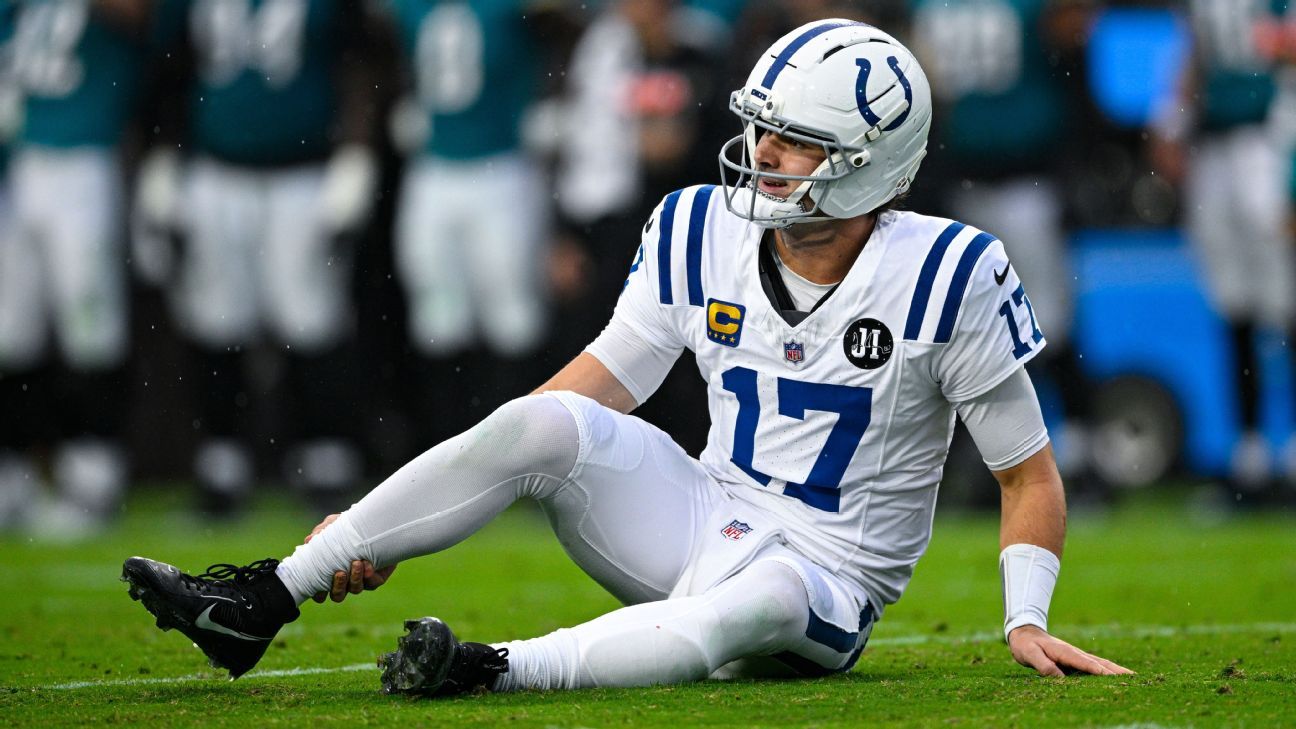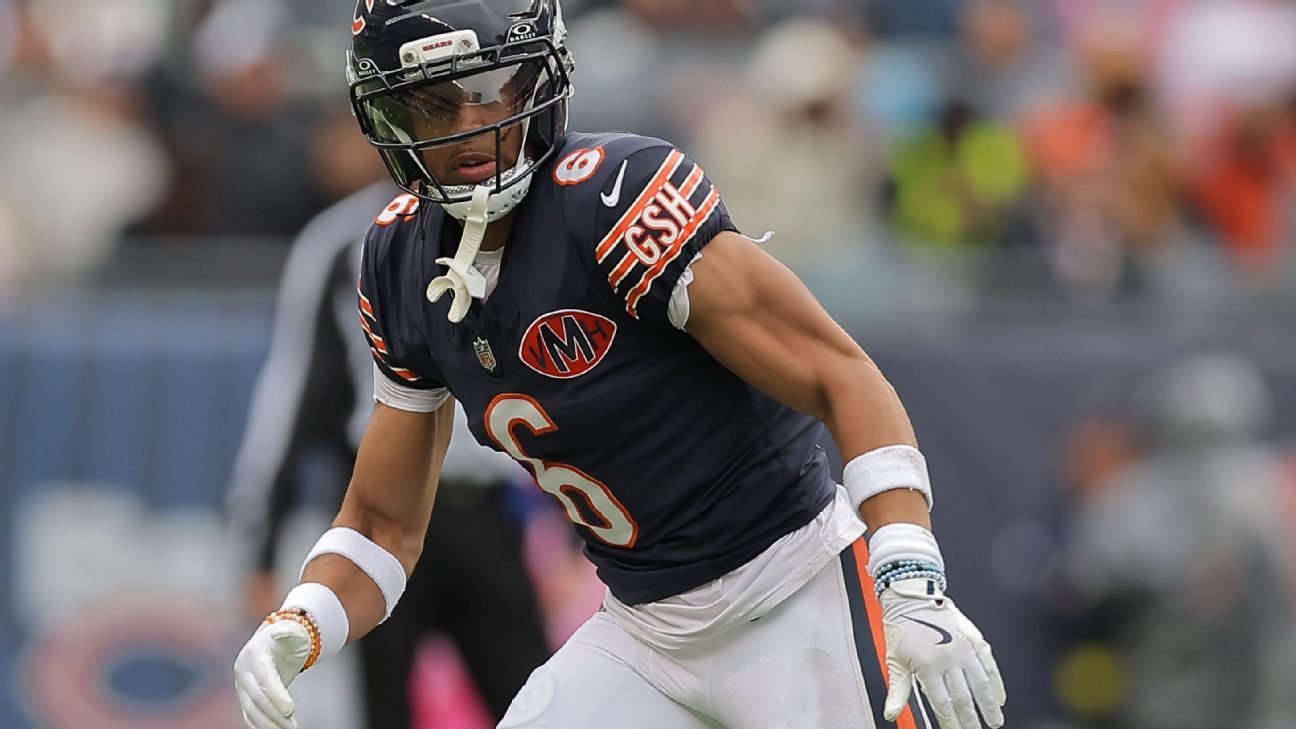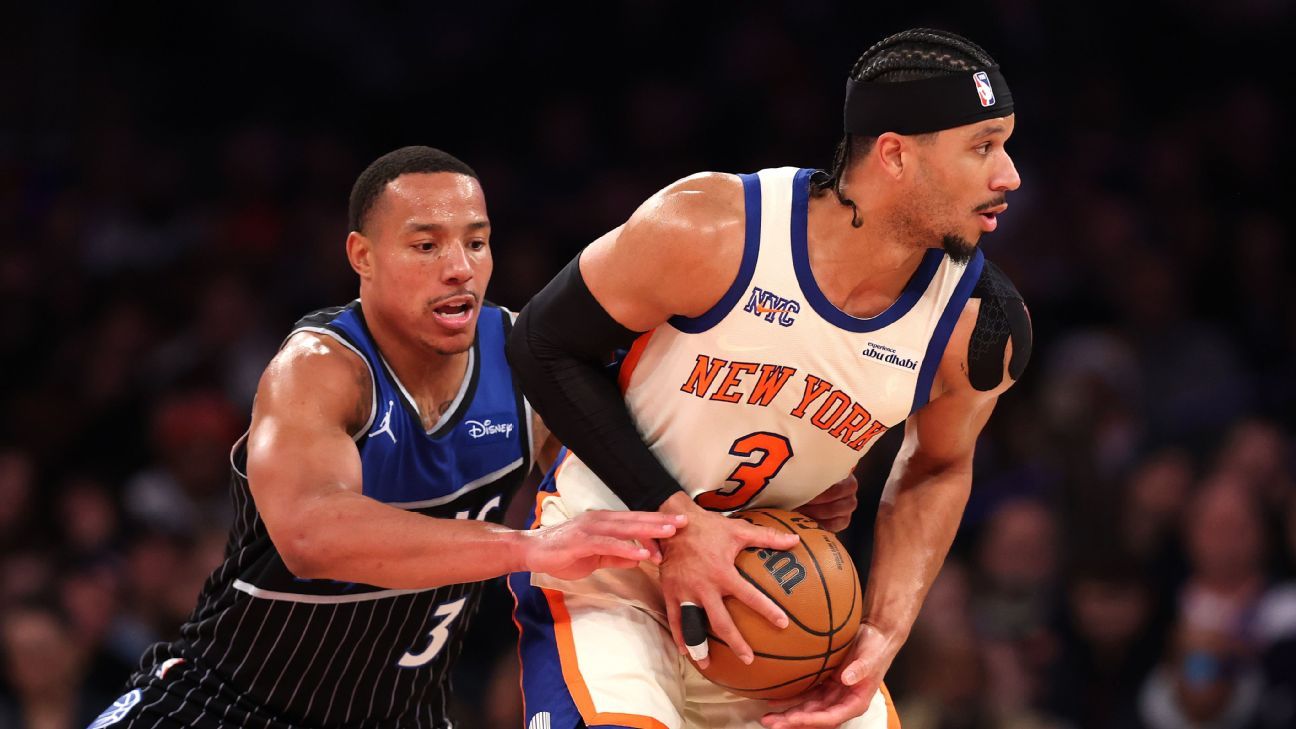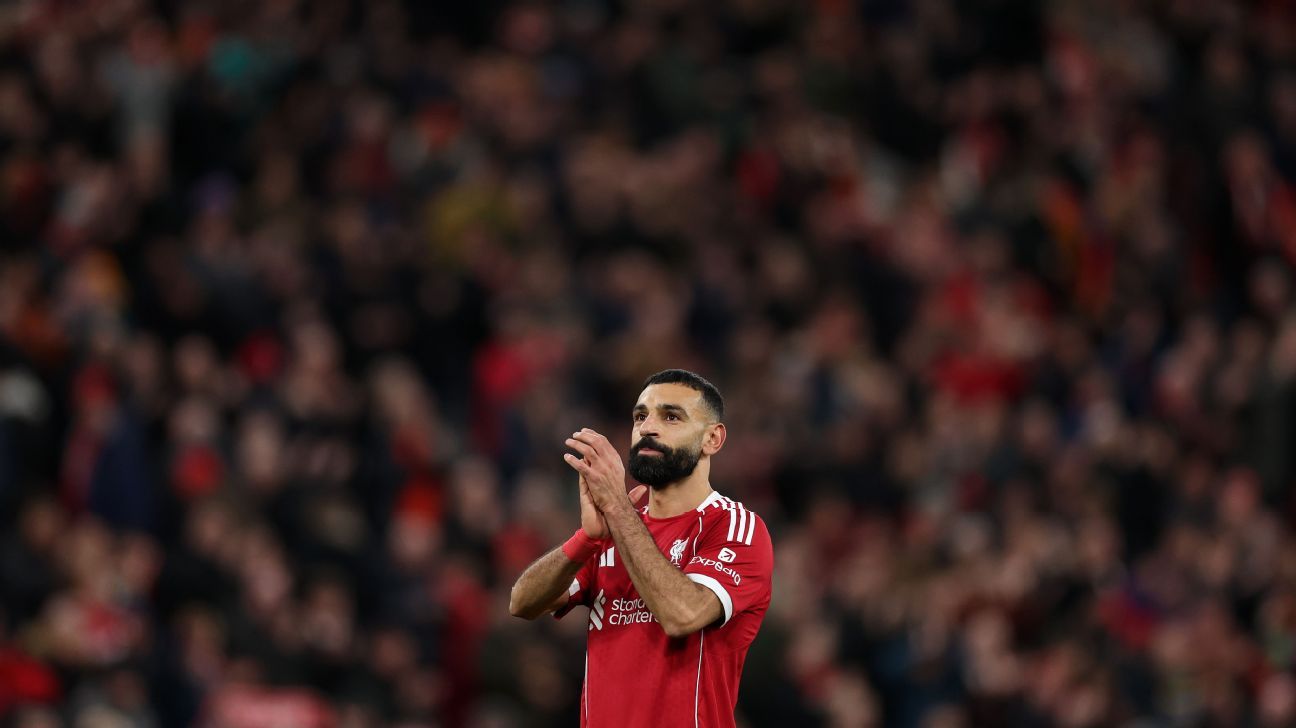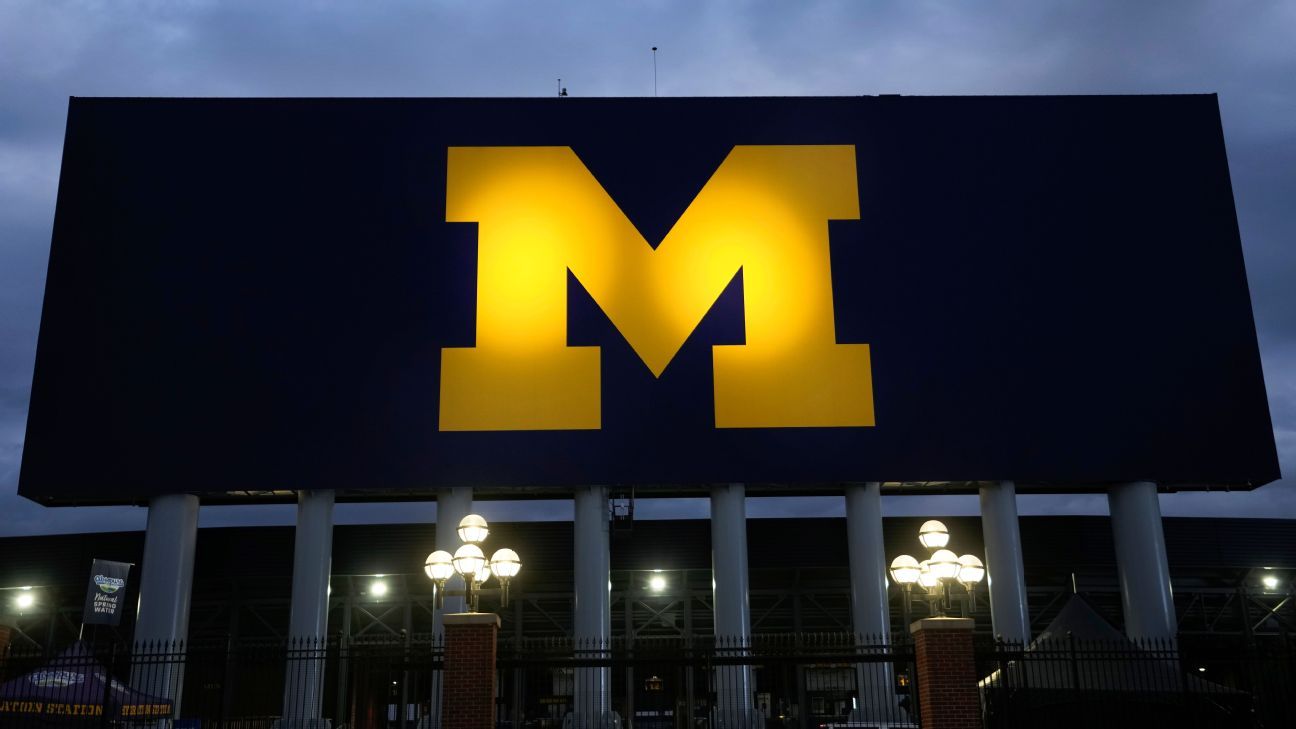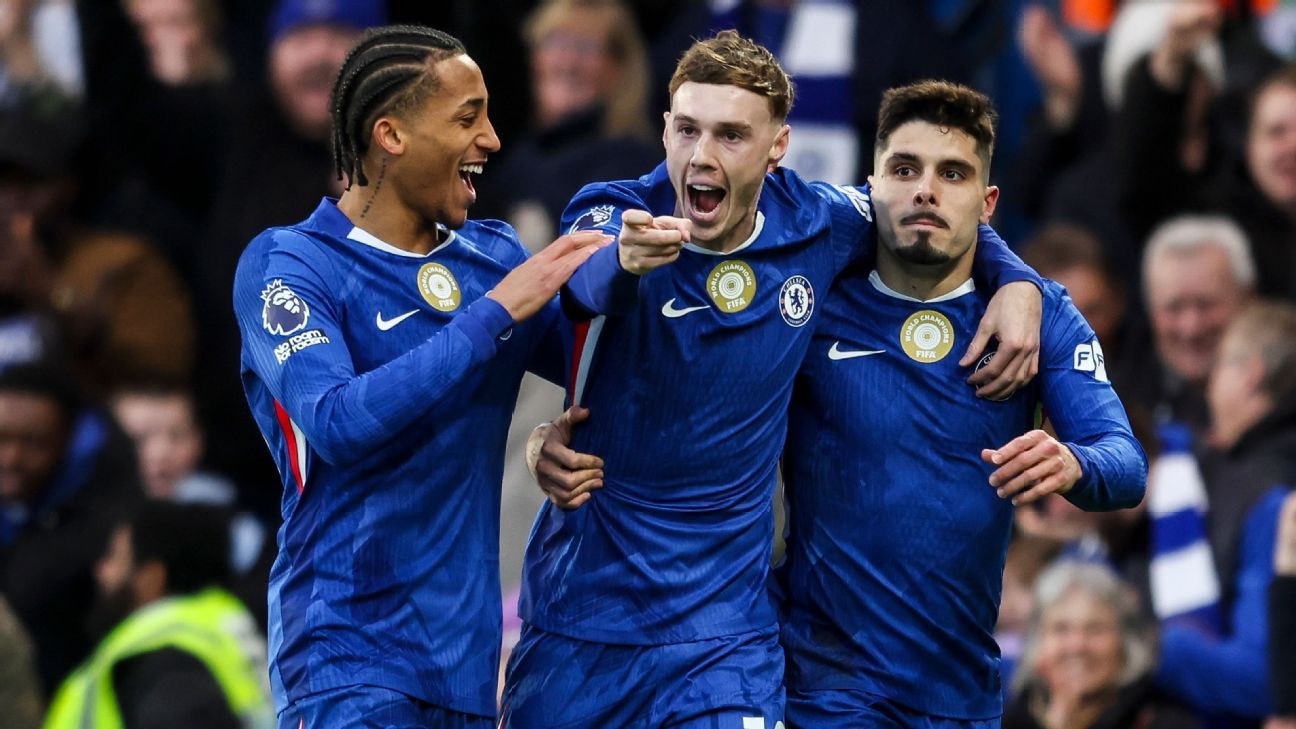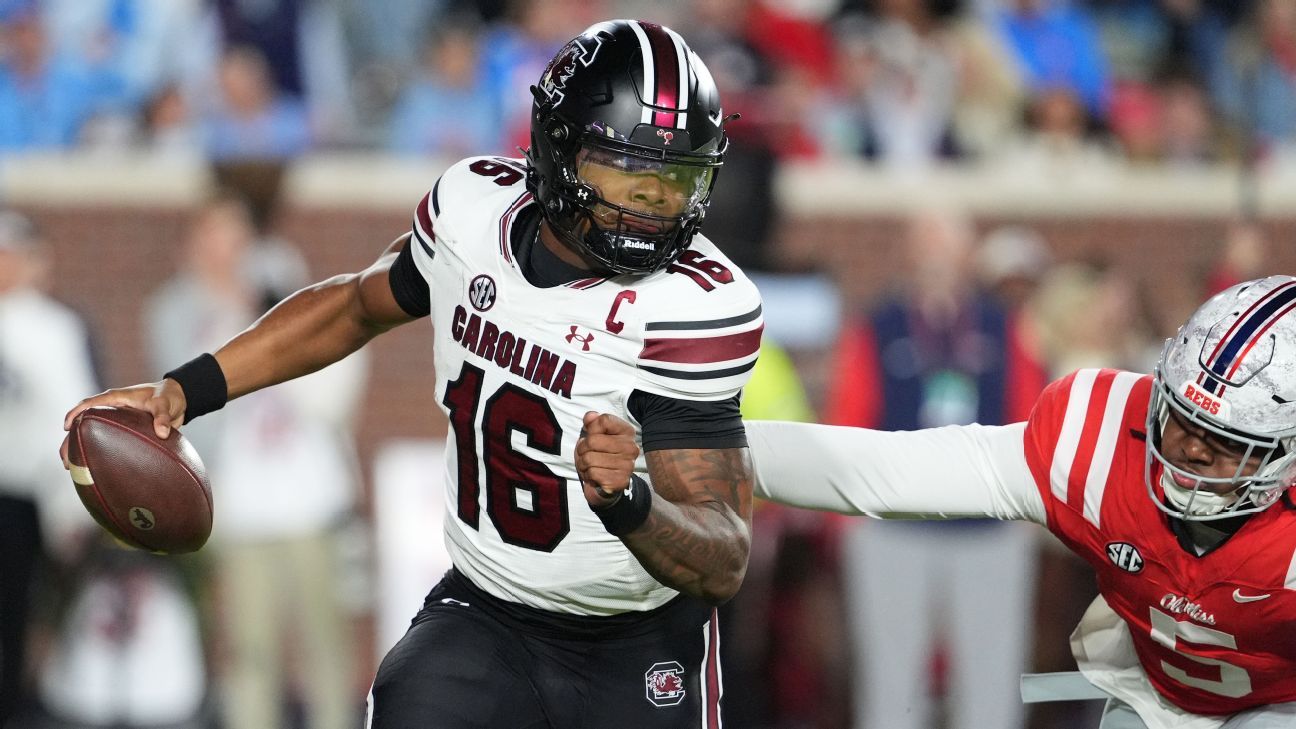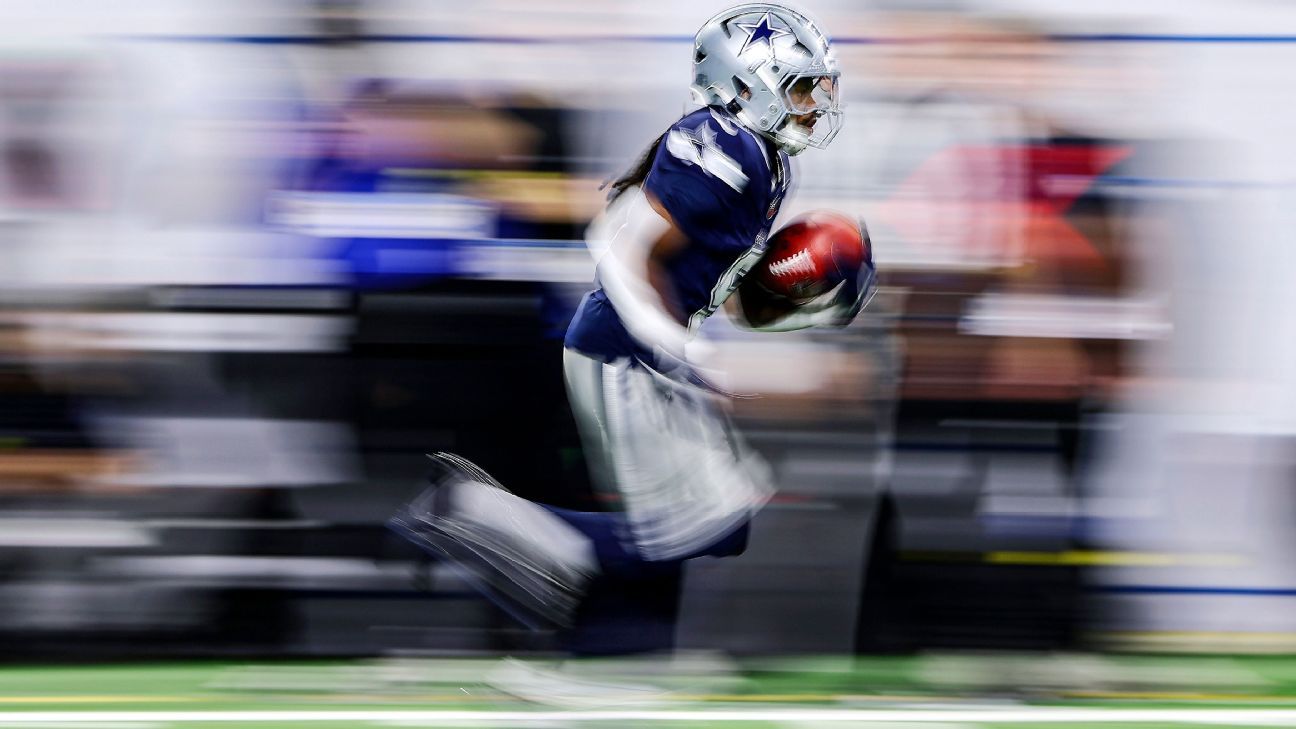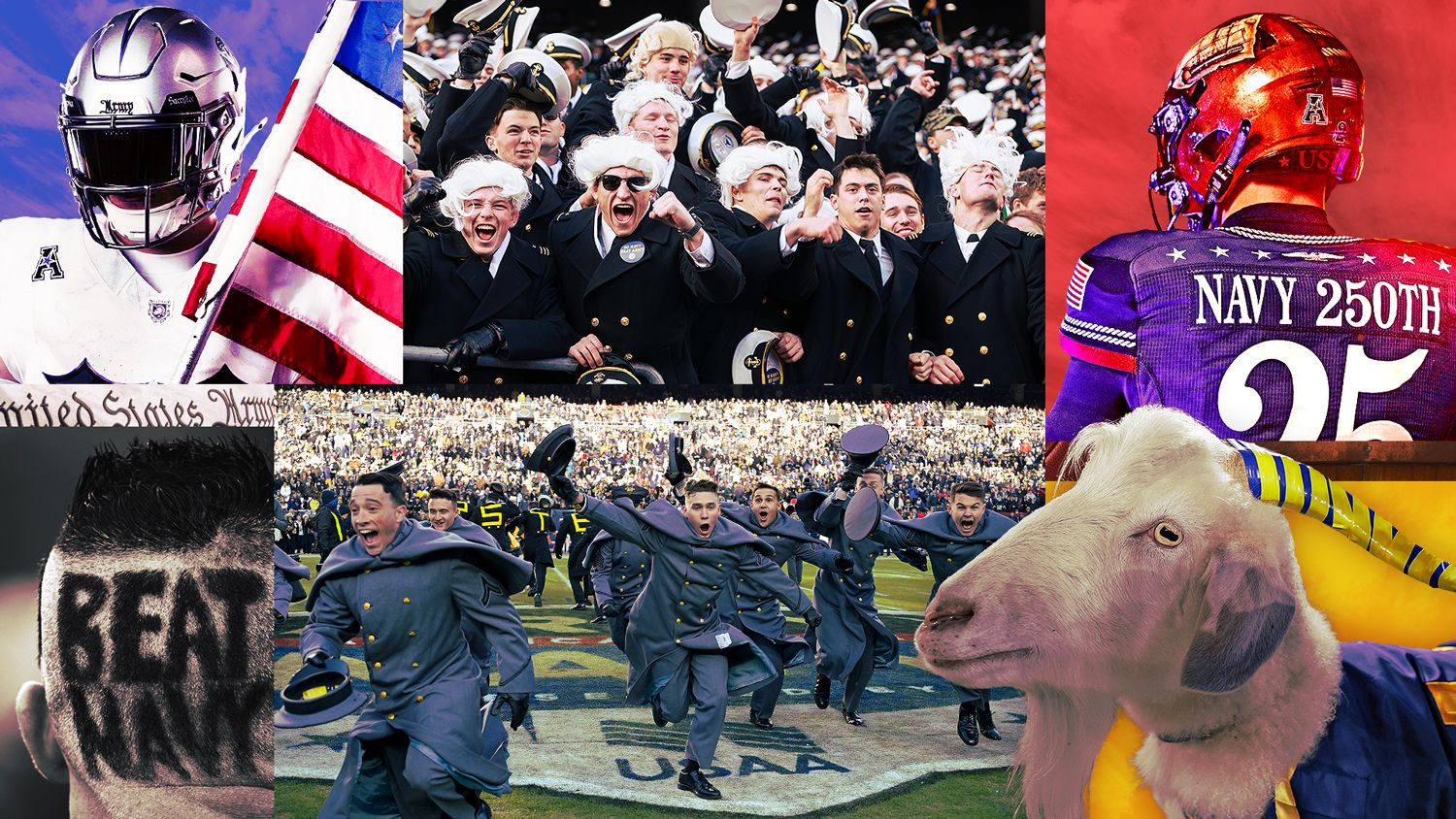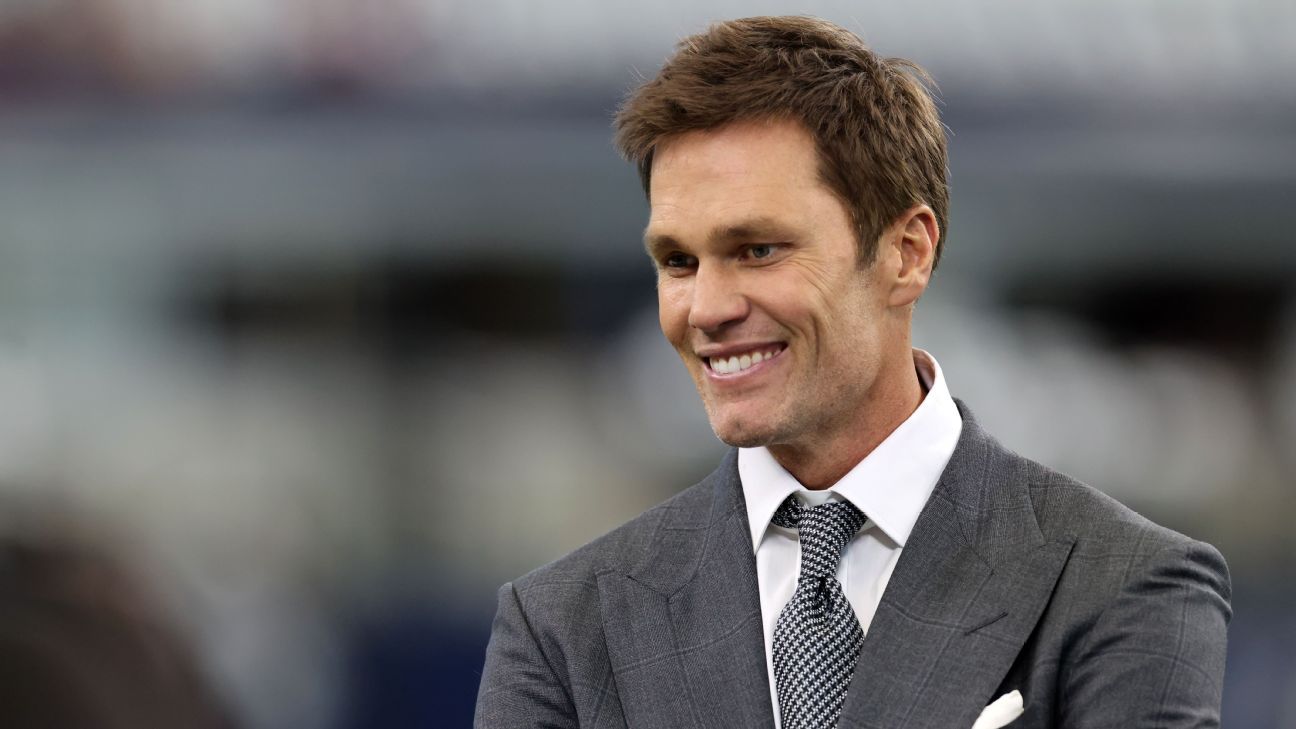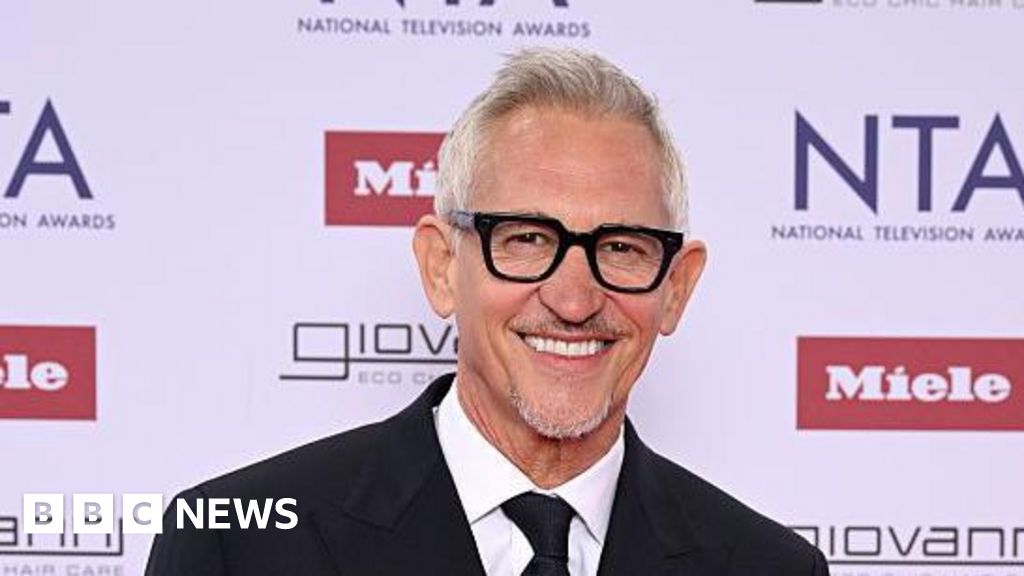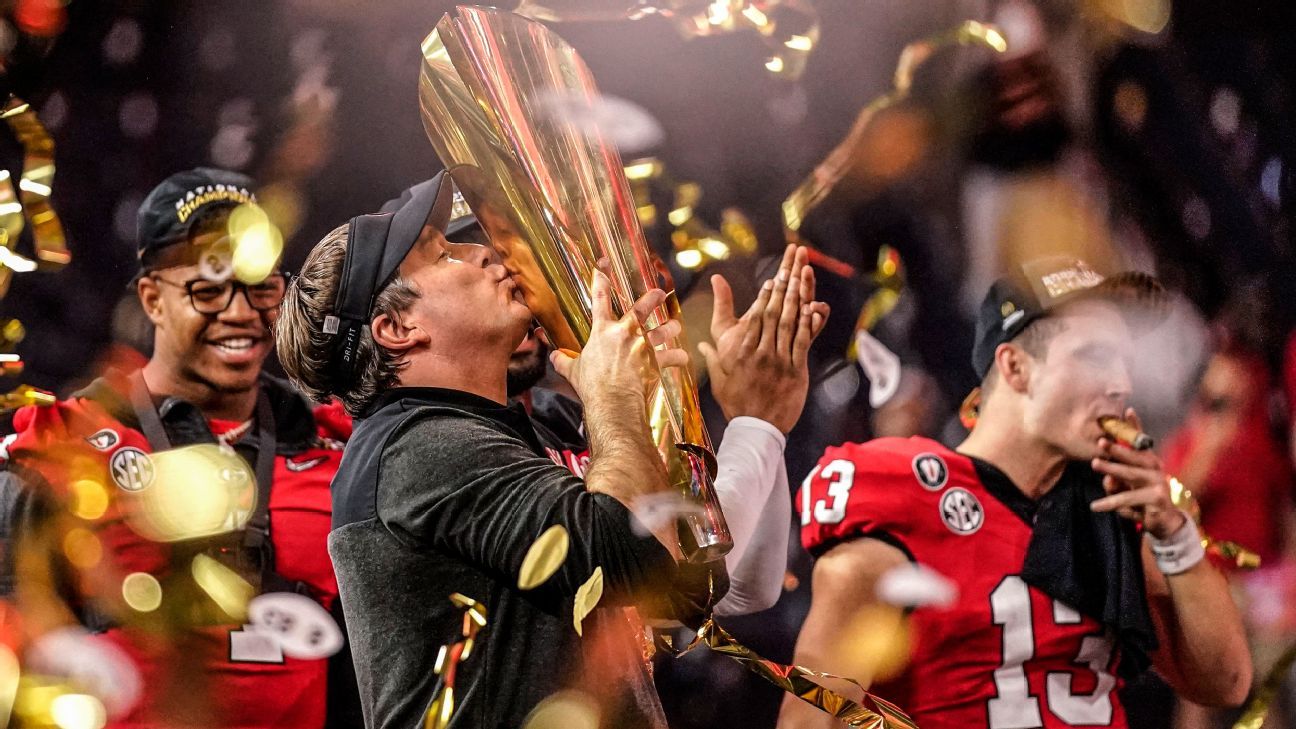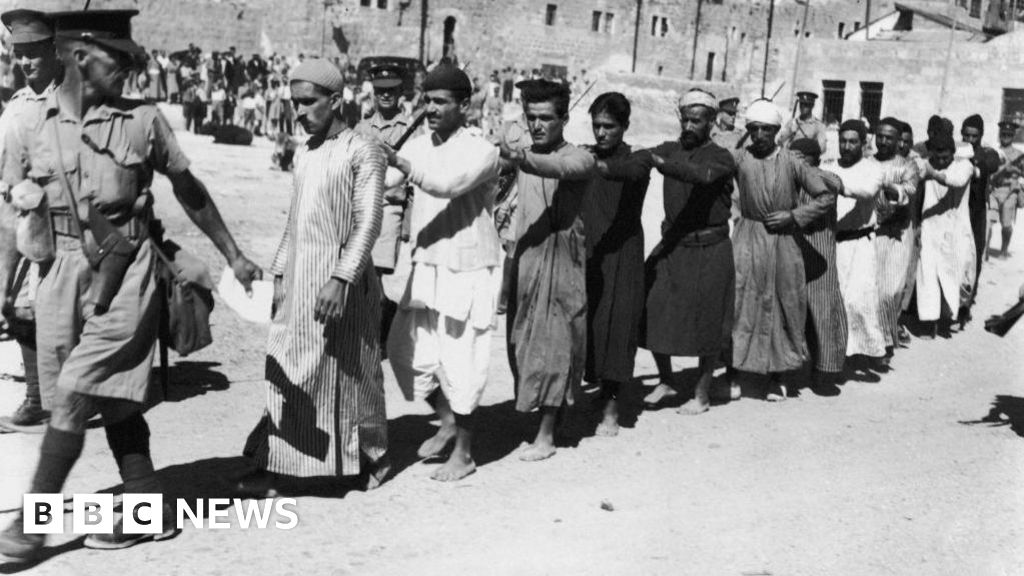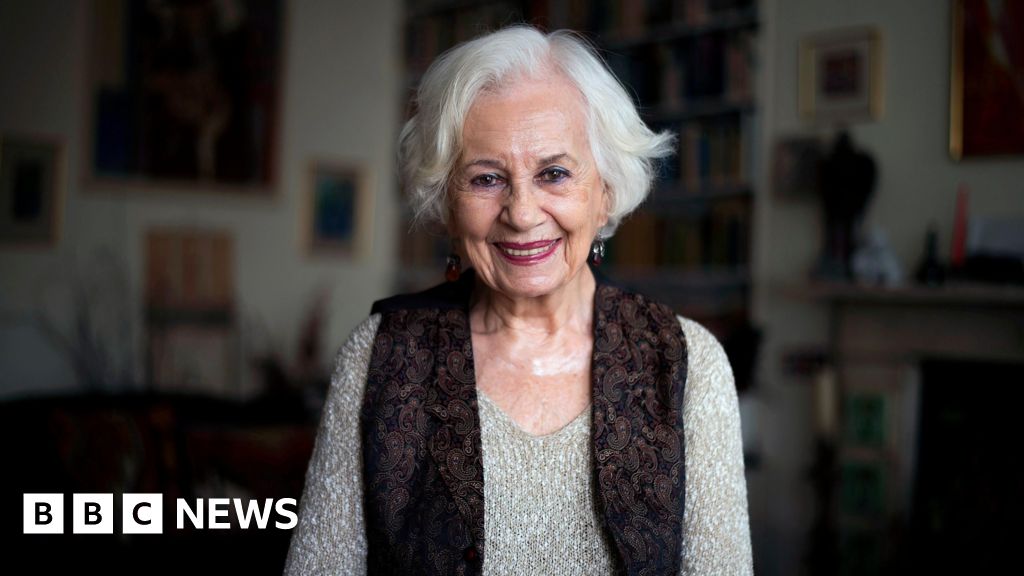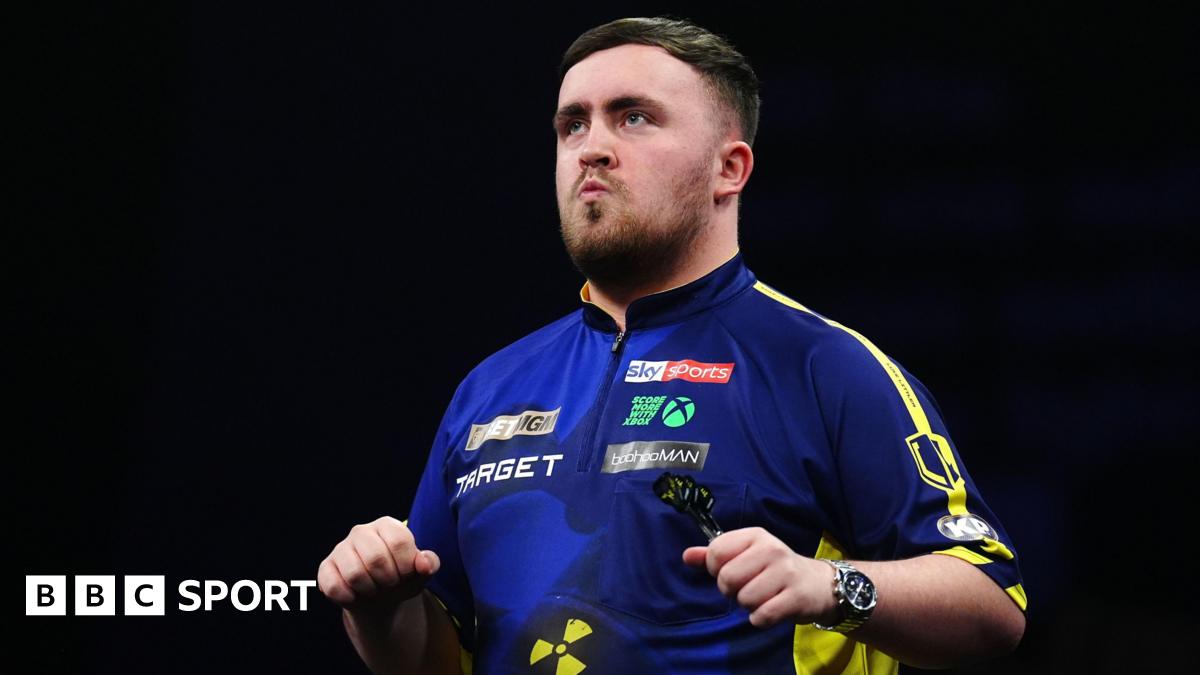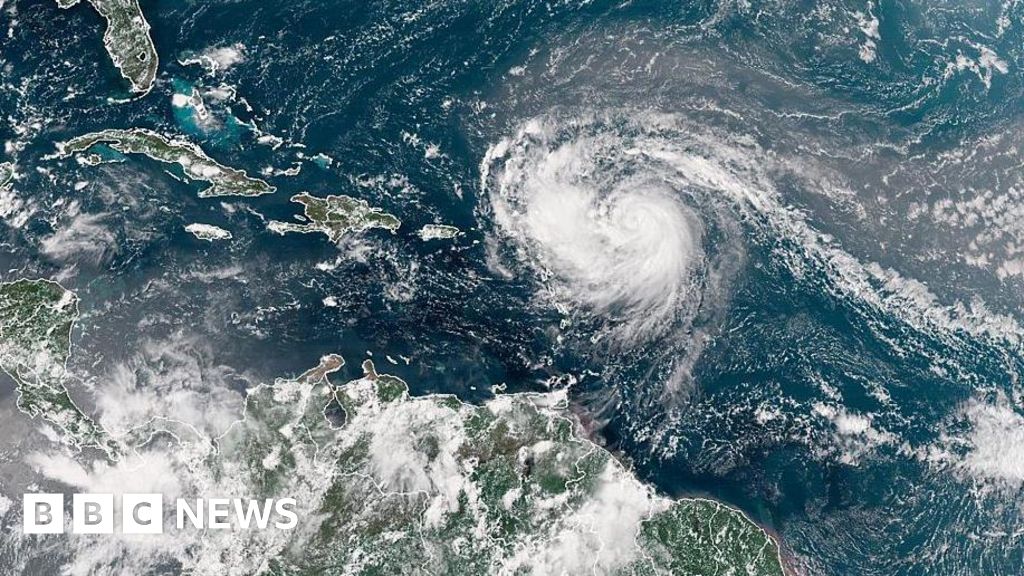
Dana LeeOct 31, 2025, 07:30 AM ET
- Dana Lee is a reporter-researcher at ESPN.
ON THE FIRST Sunday of November, more than 50,000 people -- elite runners, Broadway stars, celebrities and amateurs alike -- will lace up for the TCS New York City Marathon. Among them are 90 volunteer pacers for New York Road Runners (NYRR), the nonprofit that organizes the race. Tasked with guiding and encouraging runners through the five-borough 26.2-mile course according to the finish time posted on their handheld signs, pacers are the loudest unsung heroes of the marathon.
"The pacer is there to guide you from Mile 1 to the finish line," says Philippe Day, who's pacing the 4:55 group. "They tell you when there's water stations, when to take your gels, how many gels you might need for the course. You have to trust them."
The requirements to become a pacer for NYRR, which organizes more than 60 races across New York City, are firm. Candidates must:
Finish at least three marathons or five half-marathons
Run the course of the race they will be pacing at least three times
Complete a marathon in the past two years with a time of at least 30 minutes faster than the group they will be pacing for. Or have finished a half-marathon at least 15 minutes faster than their pace group's pace.
Run a road race of 10K or longer within the past three months.
Once accepted, pacers participate in a four-week course in which they learn tips and tricks of the trade and even receive homework assignments. Some assignments are written, while others are more practical -- like, can you run 2 miles at your marathon goal pace? How about 4 miles? Mile splits are sent to NYRR to review. Once they "graduate," pacers become part of NYRR's roster of about 200 volunteers. Pacers receive a blue-and-white striped NYRR singlet and free entry to the race they are pacing but are otherwise unpaid and pay for any travel and prep out of pocket.
"We have some pacers from Italy, from London. And some are also now from California," says Steve Mura, NYRR's lead for runner training and education. "I'd say about 90% are local -- New York and New Jersey. And then we have 10% who are not tristate-based, [including] 5% who are out of country."
Finish times for pace groups at this year's marathon range from 2:55 to 6:15 with pacers spread throughout in five-minute intervals. Last year, 90% of pacers for the New York City Marathon finished within 30 seconds under goal time.
"After every race I go through and look at every single split -- what the split is and what it should be," Mura says of splits, the time it takes to complete a specific segment of a race or workout. "For New York, every 5K gets splits. I look at every single pacer's split at the 5K, 10K, half and so forth. I make sure they didn't pull out too fast."
Pacers who finish within their assigned times for some of NYRR's biggest races -- the Brooklyn Half Marathon, the NYC Half Marathon, the New York City Marathon -- are asked to return the following year. "Those are the best of the best out there," Mura adds.
In advance of this year's marathon, ESPN spoke with five pacers across various time groups to get a better idea of what it means to wear the blue-and-white striped singlet -- why they do it, their favorite parts, everything that can go wrong over the span of 26.2 miles and what it's like to run and hold a sign across five boroughs.
Below are their candid responses on how and why they pace the New York City Marathon.
MEET THE PACERS
Vanessa Tang, pacing 3:25: This will be my very first time pacing the New York City Marathon. But I've run in it six or seven times. I'm very familiar with the course. It's kind of in my heart.
Philippe Day, pacing 4:55: I've paced the last 13 New York City Marathons.
Justin Wood, pacing 2:55: It'll probably be my 10th time pacing, but this is the first time I'm pacing the 2:55 group.
Sabrina Seher, pacing 4:30: Once you start pacing smaller races, you keep working your way up to the majors. Chicago was my first major and then you just kind of keep going bigger and better. This will be my fourth New York City Marathon as a pacer. The New York City Marathon is the goal of all goals. It's the marathon to pace. It's the Big Apple.
Jackie Choi, pacing 6:00: I've paced the New York Marathon [every year] since 2013. I think I paced every single year since, except for one year -- I was in my third trimester with my first kid. I timed my second kid much better.
"NEW YORK, NEW YORK"
In 1970, 127 runners registered for the first-ever New York City Marathon. Organized by New York Road Runners, the entry fee at the time was $1. Fifty-five runners finished. Five and a half decades later, more than 2 million spectators line the streets of New York to cheer runners in what has become the largest marathon in history. In 2024, more than 55,646 runners crossed the finish line.
Wood: I love the start line. The cannon boom, Frank Sinatra's "New York, New York" playing over the speakers. Just knowing that people are getting ready to try to achieve their goals, it's something that empowers me, excites me, energizes me. Going through all five boroughs, you see the full breadth of New York City, the humanity that's out there.
Choi: It's the best day of the year, in the best city in the world. It's like a party.
Seher: A fun thing I like to do on the course is whatever borough I'm in, I like to be really loud and tell them the last borough was louder than them. I'll raise my arms up, like "We can't hear you," and get them going.
Choi: I used to dress as the Statue of Liberty. Now my thing is dressing up as a taxicab. I wear a yellow tutu. I have a taxicab hat with the white and black checkers. I'm wearing black shorts and white-and-black knee-high socks and yellow arm sleeves. My pacing sign is in the shape of a taxicab. I'll run by people and say, "Hey, catch a ride. I'll take you to the finish."
Tang: Our job is to make runners' experience smoother, more manageable and even more fun. At the end of the day, it's about trust, right? Trust your training, trust your pacer. And most importantly, trust yourself.
In 2019, Eliud Kipchoge famously broke the two-hour barrier in the marathon using a team of 41 pacers. Featuring Olympic and World Championship medalists, five captains led five pace teams consisting of some of the best runners in the world. Considered one of the greatest marathoners of all time, Kipchoge is making his New York City Marathon debut this weekend as part of the professional field.
Eliud Kipchoge, 11-time Abbott World Marathon Majors champion: Pacers are critically important in the life of running. Whether you're pacing for 3:00, 3:30, 4:00, 5:00, those are the people who actually assist you in achieving what you have been planning for in your life for the past four or five months.
Seher: I always tell people, let me do the hard work. That way you can kind of go in cruise control.
Day: You have to be able to bring [runners] along because they depend on you. I tell them where the water stations are, to watch out for potholes, all kinds of things. I'm their eyes. I'm guiding them.
Wood: The first mile is always tricky. There's 50,000 people out there. It's always a balancing act where you're trying to get into the groove.
Day: Depending on what part of the city you're in, GPS does not work. You have to run by feel. A lot of times, the runners, they panic. They say, "I'm going too slow," or "I'm going too fast." I say, "No. Don't worry about it. You're on target. It's just the GPS that's not working."
Seher: That's why we rely on mile markers.
Mura: The course is always right. Your Garmin is not always right.
THE COURSE
Originally run as a four-plus-loop course through Central Park, the New York City Marathon eventually expanded to all five boroughs in 1976, amid a nationwide running boom. Starting on Staten Island, the course is famously hilly. Runners traverse numerous bridges, the slopes of Central Park, the pavement streets of Harlem and more in the 26.2 miles.
Kipchoge: We need a course which is a challenge to ourselves. It's a challenge to your muscles. It will challenge your whole body, it will challenge your mind and even will challenge your preparation. Only you can get it in New York.
Choi: There are two points of the race that are really magical to me. The second part is not weirdly magical. That's the finish line. But it's around Mile 15, on the Queensboro Bridge. It's basically the only part of the race where there isn't huge crowd support. And it's very long. It's very quiet.
Seher: It's so quiet it's kind of creepy. All of a sudden, all you hear is a bunch of footsteps and breathing.
Choi: It's not the biggest hill, but it is a big hill. It's one of my favorite points of the race because that's when I feel I really need to do the work. I will sing songs. I will cheer everyone up. I'll say, 'Hey, if you make it to this next major hill, I will tell you my secret of running up hills.'
Wood: People think New York is relatively flat, but it's actually not. The bridges wear on you.
Day: We start on a bridge. A lot of people don't realize it because they start fresh. But the Verrazano is almost a mile long. You start on an incline, basically.
Tang: I've done all the world majors, including Sydney. [New York] is the hardest.
Mura: It's very hilly. It is almost impossible to have an even split on our course.
Tang: My strategy is to run at effort pace, rather than just the watch time. We're going to ease it back a little on the bridges and uphills and then naturally pick it up on the downhills. Overall, the average pace will stay even.
Choi: Because I'm doing the six-hour group, we walk all of the uphills. We walk with purpose. And then we run all the downhills.
Seher: I'm like, use your arms, use your glutes. Because what comes up must come down.
Wood: The surprise that gets people is the Fifth Avenue Hill.
Day: It's a slow incline. After Mile 22, any little incline, you feel it in your legs.
Wood: It's not a huge hill on an ordinary day, but at that stage in the race you come around Marcus Garvey Park, and then you go from 109th Street, 108th Street, up to 89th, 88th Street, and you just feel the climb. I've seen over the past few years that spectators have learned that's a point where people need rallying. So, there's been more crowds out there.
"ANYTHING CAN HAPPEN"
Pacers train for weeks leading up to the big day. But sometimes, you can't account for the unexpected and must adjust.
Tang: The marathon is so long. Anything can happen during that time.
Wood: You have to respect the distance.
Choi: My watch broke. I think it was around Mile 20. It was after the First Avenue portion. I had to run by feel and I was a little nervous. I actually think I ran my best time that year. I now use two watches. One time, both watches broke at the end.
Seher: My watch went really crazy once. It gave me PTSD for a while.
Mura: Sometimes we partner people up. 2:55 is a very hard time to pace. So, they're running side by side the whole time because it's easier to run with someone. We have nine four-hour pacers because it's such a wide berth of runners trying to hit that time.
Wood: In 2018, I came into the race a little bit injured. I must've pulled something in the lead-up to the New York City Marathon. My calf was feeling a little bit off. I thought I had rehabbed as best I could, but at Mile 18 to 20, I was slowing down a bit. I just kept my co-pacer in view and then told my group to stay with my co-pacer. I had to will myself to finish, but knowing I wasn't going to hit the time, that was a nice ego check.
Tang: I think my biggest concern is, like hypothetically speaking, what if I need to run to the bathroom?
Choi: I don't know if this is TMI, but my biggest thing is making sure I don't have to go to the bathroom. So far, knock on wood, it's never been the case for me.
Day: Recently, I had to use the bathroom twice. Sometimes you have a co-pacer and it's not an issue. But I didn't have a co-pacer. So I had to pick someone who was with me and chatting throughout the race. I didn't pick any random runner. This was a person that was comfortable running that pace. I said, 'Can you hold the stick for me? I'll be right back.' The person held the stick. I went to the restroom, and I caught up with them. They were still on target.
Choi: I had one particularly bad year. It was very hot.
Mura: The years where the [pacer] success rates are a little lower, there's usually bad weather.
Choi: I remember, for the first time ever in my relatively long pacing career, I realized, 'Oh my gosh, I'm not going to hit my time.' I was apologizing to the runners around me. I felt horrible. I was there to do a job. And I wasn't doing my job. And yet everyone around me was just so incredibly nice. These are complete strangers. They gave me so much grace.
Day: I've had a runner step on my foot around Mile 9. I fell and twisted my ankle. I still got them there in four hours -- my blood was still hot -- I didn't feel any pain. But afterwards, I had to go to the emergency room. They had to put a cast on it.
Seher: I've almost been tripped. People literally continue to be on top of you, but you don't need to be on top of me to the point of tripping me. I'll say, 'It's going to be a really bad day for you and me if you're tripping me.' Because I've literally been kicked in the feet. It's better to tuck behind the pacer. You don't want to break your stride. It's more difficult, like stop and start, stop and start, like a car on the freeway. You want to be like birds flying when they're in a V.
HOLDING A SIGN FOR 26.2 MILES
It's one of the most frequently asked questions -- how do you hold a sign for so long? Pacers are responsible for holding signs, generally about the size of a standard race bib, attached to wooden dowels so runners can identify the pace group.
Mura: The sign is kind of part of the uniform.
Tang: I've been alternating from left hand to right hand. Sometimes I will put the sign on my shoulder so I can take a break from holding the sign straight. Especially when there's headwind. Two weeks ago, I was pacing an 18-miler in Central Park and there was one part that was really windy. I had to put the sign on my shoulder so I could get some support. I need one hand to hold the sign, and the other hand I need to make sure I can grab water or grab fuel.
Day: I go to the gym and do arm curls. It's not that the stick is heavy, but sometimes it's windy. You have to know how to control the wind. You shouldn't hold it too low because the people behind you -- you might have people that are 50-100 yards behind you -- they have to be able to see you. I always tell them, 'Once you see me, that means you're in range to hit your target.'
Wood: I probably do more than I should to try to get attention in my group. Whether it's jumping up and down or carrying the big sign (about 24 by 24 inches) to get the crowd seeing us. There are big signs and there are little signs. Before the race we carry this really big sign so that you can find us in the corrals. One of the years, I tried to get the big sign as far as I could go. I got to about Mile 17. I got it into Manhattan and then the sign was flopping around too much, and I had to put it down. The big sign you have to carry with two hands. I won't be trying that again.
Day: You get used to it. I don't really feel it. Sometimes I run the whole marathon, and I don't even change hands.
Seher: I think it's super easy. When I run a 100-miler, I have two water bottles, which are much heavier than the signs. The sign is just one little dowel rod you can get at like Home Depot. And then two bibs basically pasted together. It weighs nothing.
THE FINISH LINE
After climbing one final incline, runners finish on the south end of Central Park near West 67th Street and are greeted by music and cheering crowds.
Tang: I always love to see my runners pass me, sprinting to the finish line with everything they have left.
Seher: People ask, 'Why do you always finish by yourself?' Well, people don't want to finish behind me. They want to finish ahead of me. They don't want to finish in 4:30; they want to finish in like 4:29.
Day: When I reach Mile 24, I say, 'Now you're my worst enemy. I don't want to see your face anymore.' I try to motivate them to leave me behind. I want to push them a little bit further.
Tang: I think that's the best part of pacing, watching them achieve their goals.
Wood: I've had the privilege of being able to run fast, but I also want to help others strive to do it.
Day: A lot of people are counting on you. Some of them want to qualify for other races. Some of them it's speed. They all have a goal. You have to get them there on the precise time. If I'm pacing 4:55, I will not finish in 4:55:01. I have to finish in like 4:54:30. I have to be in between. I cannot do :53. I cannot do :55. I have to be within that gap :54:01 up to :54:59. I get nervous before. I always get nervous, even though I've been doing it for so long. I still get butterflies.
Wood: I love the finish line. Once that comes into the view you know your job is achieved.
Seher: Once you run a lot, it's not so much about you and your goals anymore. You've hit so many of your milestones, it's fun to give back. It's fun to see other people achieving their goals. It's almost like you're a mini coach on the course watching people just light up, getting them through the tough spots and getting them to believe that they can do it.
Choi: The joy of seeing someone doing something hard, I'm a part of that process. I'm helping them in my very, very limited way and it's the biggest high. It's the biggest rush.

